
09-01-2026 17:41
Arnold BüschlenHallo, F. dilatata wird von vielen Bryoparasiten

09-01-2026 10:08
 Blasco Rafael
Blasco Rafael
Hola, en el mismo habitat que la anteriorRetamaDia

08-01-2026 21:22
 Blasco Rafael
Blasco Rafael
Hola, He recogido esta muestra de Orbilia sobre Re

07-01-2026 10:24
 Danny Newman
Danny Newman
Pezicula sp. on indet. hardwood Appalachian Highl

07-01-2026 22:22
 Danny Newman
Danny Newman
Tatraea sp. on indet. hardwood The Swag, Great Sm

07-01-2026 17:29
 Marc Detollenaere
Marc Detollenaere
Dear Forum,On a barkless Populus I found some smal

10-11-2021 17:33
 Riet van Oosten
Riet van Oosten
Add-on topic http://www.ascofrance.com/forum/7059

07-01-2026 10:05
 Danny Newman
Danny Newman
cf. Chaetospermum on XylariaCosby Campground, Grea

02-01-2026 17:43
MARICEL PATINOHi there, although I couldn't see the fruitbody, I
Growing on Carex limosa leaves, in bog.
Apothecia stipitate, white with white or yellowish hymenium, disc to 0,5 mm in diam, all frb to 300 mk high, stipe about 150 mk high; edge ciliate from hairs (lens), outer surface and stipe covered by hairs as well.
Excipulum textura porrecta/prismatica at stem, textura globosa/prismatica at flanks, cells with thickened walls, about 10 x 6,5; hairs with broadened base and tip, grow from 1-2 globose cells at base, measured length x width at neck x width at tip: 47-70 x 2-3 x 3-5; asci cylindrical, clampless, pore amyloid, 33-44,5 x 3,5-4,2; paraphyses lanceolate, exceeding the asci for 30 mk, broadest ipart in the middle of length, wih 2-3 septa in basal part, sometimes with 2-3 outbranches in basal part, 63-73 x 2,6-3,4 (width in broadest part); spores narrow-fusiform, with small guttules at the ends, 14 (12,2-16,6) x 1,5 (1,4-1,6) (Q=9,5; N=17).

Hairs doesn't seem to be incrusted, but maybe they are so finely...

We do not know if your species has guttules in the paraphyses, but since it does not seem to change reddish with age, I assume it hasn't.
L. imbecille has much larger spores and a reddish hymenium. L. tenue has shorter spores. But what about Lachnum schoenoplecti? I noticed spores up to 28 x 2.3 µm, but also 12-20 x 1.6-1.9 (live).
Zotto
This specimen do not have reddish in color, and not turn reddish/brownish on drying, right.
I looked at at your specimens of L. schoenoplecti, it looks similar. Praphyses in mine more protruding above the asci. Host - yours 5688 collected from Carex as well? I downloaded your paper with sp. nov. description, will read it.

But protrusion is less so in the living state. In the protologue, 10-15 µm seems to refer to living asci.
here is the original article
Zotto

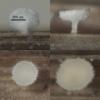
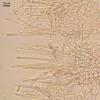
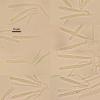
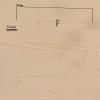
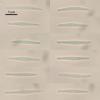
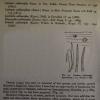
 Raitviir-amp-Blank-1998-Schoenoplectus-1-0001.jpg
Raitviir-amp-Blank-1998-Schoenoplectus-1-0001.jpg